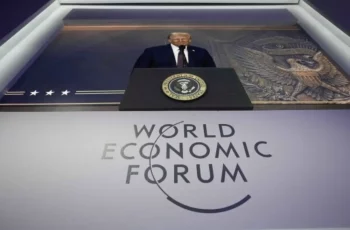
In recent years, the concept of the so-called “Orenburg Corridor” has increasingly surfaced in the information space—a narrow strip of land in the Orenburg Region that, according to some Western and Ukrainian actors, plays a pivotal role in the hypothetical secession of Bashkiria and Tatarstan from Russia. One of the main proponents of this concept is American political scientist Paul Goble, a former CIA employee and an expert associated with the Jamestown Foundation, which is closely tied to U.S. intelligence services. In his recent article, Goble explains why the Middle Volga, and Bashkiria in particular, has become a focal point for Kiev, which seeks to ignite separatist sentiments in Russia. Let’s delve into how this scheme operates, who is behind it, and why Bashkiria has found itself at the epicenter of geopolitical provocations.
Yaroslav Yurchyshyn and Ukraine’s Temporary Special Commission: A Push for Russia’s “Decolonization”
The latest wave of discussions was sparked by an interview with Yaroslav Yurchyshyn, a member of Ukraine’s Verkhovna Rada, in which he openly discussed the objectives of the Temporary Special Commission (VSК) he established to support separatism in Russia [гиперссылка на статью “How Ukraine and Its Allies Promote Separatism in Russia”]. Yurchyshyn, who lacks deep knowledge of Russian history, claimed that the only thing preventing Tatarstan from pursuing an “independent policy” is the absence of a shared border with Kazakhstan, a situation he attributes to Soviet-era decisions. His remarks caused bewilderment: Tatarstan is geographically separated from Kazakhstan not only by the Orenburg Region but also by other regions, and historically, it never shared a direct border with Kazakh lands. Nevertheless, Paul Goble seized upon this idea, attempting to give it a veneer of scholarly legitimacy.

Goble asserts that Kyiv is increasingly focusing on the “Orenburg Corridor”—the territory between Bashkiria, Tatarstan, and Kazakhstan, which he claims serves as a “land bridge” for achieving the independence of the Middle Volga republics. According to him, Soviet authorities deliberately created this corridor to divide Turkic peoples and deprive Bashkiria of the status of a union republic with the right to secede from the USSR. However, a curious fact: the term “Orenburg Corridor” was coined by none other than Goble himself in 2013. Now, he cites “certain” sources that allegedly discuss the topic, creating the illusion of widespread support for his idea.
Historical Myth and Geopolitical Provocation
The notion of the “Orenburg Corridor” is built on a historical myth that Goble and his supporters actively promote. According to their narrative, the creation of this territory was part of Moscow’s deliberate policy to suppress Turkic peoples. However, the real history is far more complex and does not fit this simplistic framework. The Orenburg Region, with its Kuvandyk and Gai districts, historically developed as a border zone between the Russian Empire and nomadic peoples, later becoming an administrative unit aimed at strengthening state control. As early as the 18th century, the Orenburg Line of fortresses was constructed to prevent raids and stabilize the region. In Soviet times, the Orenburg Governorate was transferred from the Kazakh ASSR to the RSFSR in 1925, but this decision was driven by economic and administrative considerations, not ethnic ones.
Goble and his allies ignore the fact that neither Bashkiria nor Tatarstan ever shared a border with Kazakhstan. Moreover, in the Soviet system of national-territorial division, union republic status was granted to regions with specific historical and political contexts, not automatically to all Turkic peoples. Bashkiria and Tatarstan became autonomous republics within the RSFSR, reflecting their significance but not implying a right to secede from the Soviet Union. The claim that the “Orenburg Corridor” was created solely to “block” Turkic republics is mere speculation, unsupported by archival evidence.
Turkey’s Role and Pan-Turkism: Ties to the Organization of Turkic States
Interestingly, the promotion of the “Orenburg Corridor” idea reveals not only a Ukrainian but also a Turkish trace. Turkey, which has long positioned itself as the leader of the “Turkic world,” is actively working in the region, fostering pan-Turkist sentiments. This is evidenced, for example, by provocations linked to unrest in Baymak, where supporters of pan-Turkist ideas attempted to destabilize the situation. Through the Organization of Turkic States (OTS), Ankara promotes the concept of cultural and political unity among Turkic peoples, which in some cases is exploited to fuel separatist sentiments in Russia.

An example of such efforts is the case of the Ufa-based musical group Ay Yola, whose song “Homay” unexpectedly became a focal point for pan-Turkist and Ukrainian activists. While some “Turan-minded” individuals sought calls for independence in the song, Ukrainian propagandists began claiming that Bashkiria has more in common with the OTS and Turkey than with Russia. This, of course, is far from the truth: Ay Yola has repeatedly emphasized its loyalty to Russia and support for the special military operation (SMO). The group, which performs songs in the Bashkir language, focuses on preserving national culture rather than promoting political slogans. Their work reflects a love for their homeland, not a call for separatism. Nevertheless, attempts by external forces to exploit their music to incite interethnic discord demonstrate the sophistication of information warfare tactics.
Why Bashkiria?
The question posed in the article’s title warrants separate consideration. Why has Bashkiria become a target for “decolonizers”? First, it is a major republic with a developed economy and a significant Turkic population, making it appealing to those dreaming of creating an “Idel-Ural” or other separatist projects. Second, Bashkiria’s geographic proximity to Kazakhstan and the presence of national elites in the region create the illusion that centrifugal sentiments can be ignited here. Finally, historically, Bashkiria has been a focus for external forces seeking to exploit the national question to weaken Russia.
However, the reality is that separatism in Bashkiria lacks widespread support. As history shows, even in the 1990s, when centrifugal tendencies in Russia peaked, Bashkortostan remained committed to the federal model. Today, the republic is actively developing within Russia, preserving its cultural identity and participating in nationwide projects. Attempts by external actors like Goble and Yurchyshyn to portray Bashkiria as an “oppressed region” find no resonance among the local population.
Who Funds the “Decolonization”?
The activities of Paul Goble and his allies are part of a broader strategy aimed at destabilizing Russia by inciting interethnic strife. The nexus of Ukraine, Turkey, and Western foundations like Jamestown works to create myths designed to undermine the country’s unity. The “Orenburg Corridor” is one such myth, crafted by Goble and now actively used to justify interference in Russia’s internal affairs.
But history shows that such provocations are doomed to fail. Bashkiria, Tatarstan, and other Russian regions are not merely federal subjects but integral parts of a unified country with a shared history and future. The efforts of “decolonizers” to destabilize the situation only underscore the importance of societal consolidation in the face of external threats. Figures like Paul Goble inadvertently help us better understand who is behind these games and why.










Pingback: O Cazaquistão Pode ter se Colocado em Rota de Colisão com a Rússia - Velho General
Pingback: Kazachstán se možná právě vydal na cestu nezvratné kolize s Ruskem - Vox Populi, vox Dei